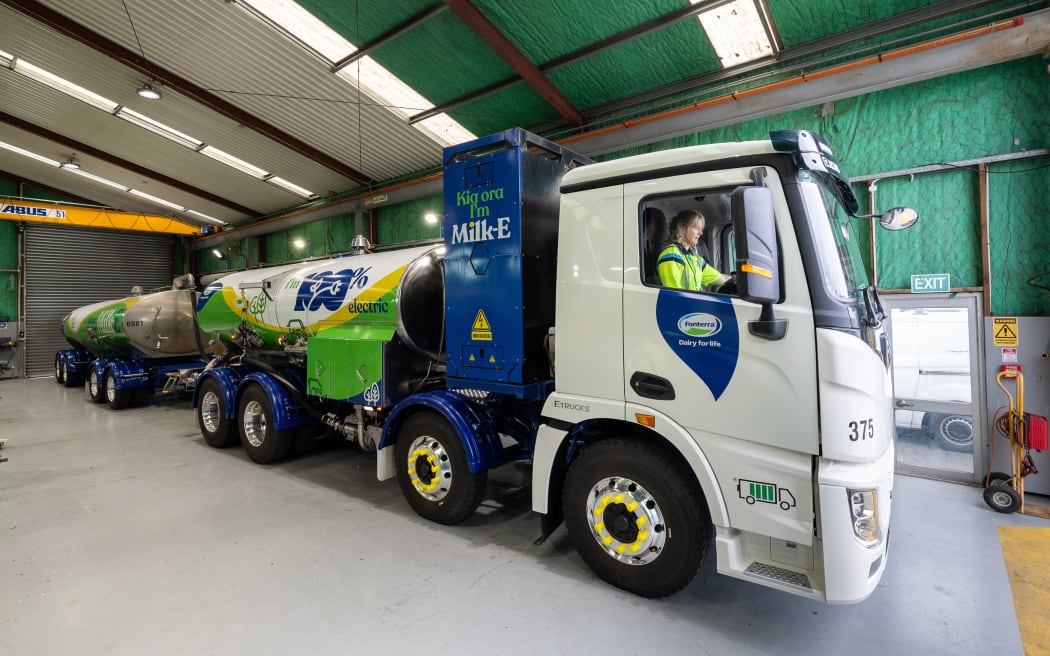
The co-op’s e-tanker was officially launched by Minister for Energy and Resources Megan Woods in Morrinsville, Waikato this afternoon.
Milk-E is about the same size as a regular milk tanker and will operate at 46T GVM (gross vehicle mass) with a trailer.
Fonterra chief operating officer Fraser Whineray said its capacity was just below a typical milk tanker’s.
“The capacity of a normal truck and trailer for milk transport is 28,000 litres and this tanker, because of its configuration, will be about 8 percent less so it won’t be able to carry quite as much milk,” he said.
“It will drive about 140km on a full charge, but that’s something we want to test on trials.
“And when it comes back to site, what we can do is actually swap the battery out.
“So, rather than take three hours to recharge, which is impractical for keeping the truck on the road as much as possible, we can swap the battery out in six minutes – well, that’s theoretically what it’s going to be able to do, and we’ll have to get in more practice like a Formula One pit crew to get up to that time, I suppose.”
Milk-E’s cab and chassis were built by Chinese construction machinery group XCMG.

Whineray said the e-tanker would be based at Fonterra’s Waitoa plant so it would service nearby farms during the trial.
He said the cost to buy the electric tanker is 50 percent higher than a regular one, but as its running costs were not at the mercy of oil prices like gas guzzlers were – it would be more economical over time.
“If you’re driving on electricity, it’s about 30 cents a litre, and if you’re driving on diesel currently, well, it’s probably a couple of dollars a litre from the forecourt,” he said.
“So, that’s one of the critical drivers here is actually that it will drop costs, and that’s important for us and it’s important for fuel imports for New Zealand, ultimately, because about a third of Fonterra’s foreign exchange earnings, the equivalent of that goes into importing fuel for the country.
“And the structural costs in an economy all have a transport component in them – every cup of coffee, every TV, whatever gets moved uses energy and transport fuel.
“So, to the extent all of that was running at 30 cents a litre today, instead of very elevated important fuel prices today, which we’re seeing come through the inflation figures and Reserve Bank responses, then structurally, the nation ends up in a far more resilient cost position and it’s also buying its electricity locally rather than having to import fuels.”
Whineray said Fonterra would trial Milk-E for a couple of years before looking to extend its electric fleet.

























